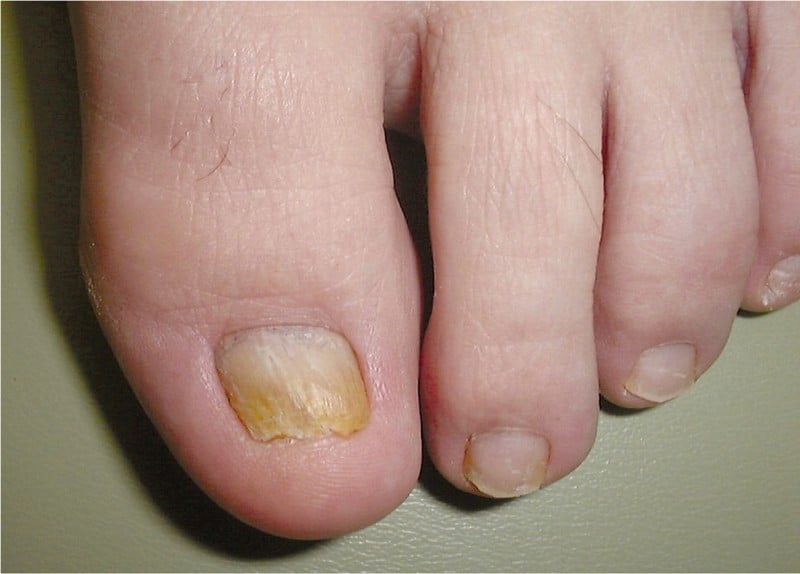Proximal Subungual Onychomycosis

The most uncommon kind of nail fungal infection is called proximal subungual onychomycosis. The infection enters the nail unit via the proximal nail fold and spreads distally. As the nail plate forms, the fungus invades the nails on both hands and feet. Injury to the area around the proximal subungual follicle may cause onychomycosis. This kind of onychomycosis is more common in people with impaired immune systems and is a clinical indication of human immunodeficiency virus infection. In cases of fast progression of proximal subungual onychomycosis, HIV or acquired immune deficiency syndrome (AIDS) may be a contributing factor.
It is characterized by a white discoloration that starts at the nail base and spreads distally. Nail dystrophy might take the form of scattered patches or striations running lengthwise. In serious cases, the whole nail might be affected. It usually involves the toenails rather than the fingernails. Without treatment, the infection might spread to other toenails.
In addition, there is a link between striate nail patterns and mild to this onychomycosis. Pain and discomfort may be experienced with a nail fold infection or paronychia infection. Those with strenuous physical activity, the elderly, and impaired immune systems are at a higher risk of developing proximal subungual onychomycosis.










